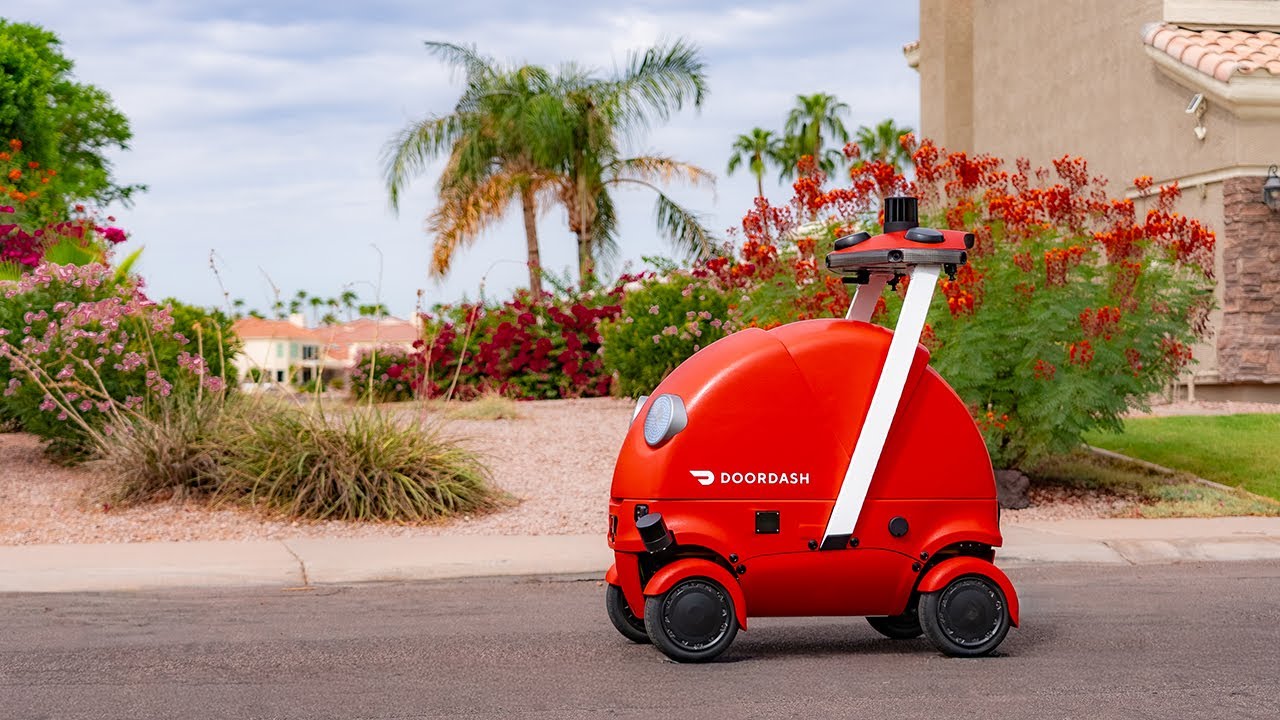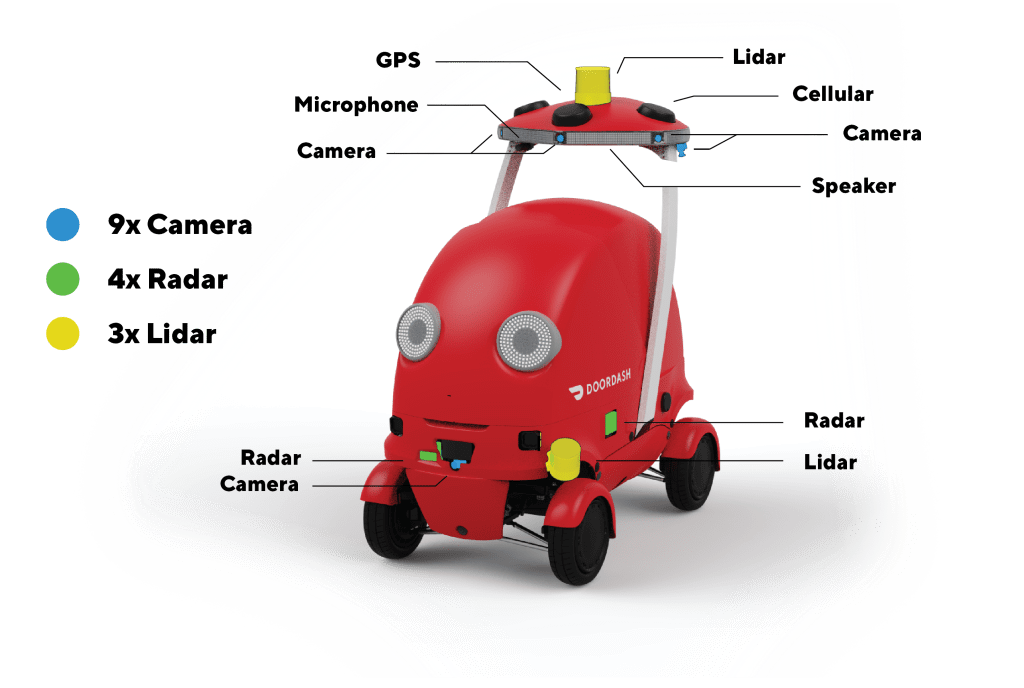There’s a new delivery robot in town, and its name is Dot.
DoorDash announced the new delivery bot today, confirming months of rumors that they were working on their own robot. The robot, developed entirely by its internal DoorDash Labs team, is the delivery company’s first homegrown bet on delivery automation and street-level autonomy, signaling the company sees owning more of the underlying robotics stack that powers delivery as a strategic priority.
Dot, which is roughly one-tenth the size of a car, can reach speeds up to 20 mph. DoorDash claims the system is designed to travel across sidewalks, bike lanes, and neighborhood roads, providing it with flexibility in navigating mixed urban environments. Watching the video of the Dot (see below), it’s clear that the robot really moves.

“(Dot) is small enough to navigate doorways and driveways, fast enough to maintain food quality, and smart enough to optimize the best routes for delivery,” said Stanley Tang, Co-Founder and Head of DoorDash Labs. “Every design decision, from its compact size to its speed to the sensor suite, came from analyzing billions of deliveries on our global platform and understanding what actually moves the needle for merchants and consumers.”
As part of the Dot rollout, the company also introduced it’s Autonomous Delivery Platform (ADP). The company describes ADP as an AI-driven dispatcher that selects between human Dashers, robots, drones, or other modes based on order type, distance, and merchant requirements.
The company described its effort to build out the autonomy stack in a post on its engineering blog. According to the company, Dot continuously ingests multi-modal sensor data (LiDAR, cameras, radar) to detect obstacles, classify terrain, and localize itself within complex urban settings. That raw sensor input feeds into a perception module, which constructs a dynamic environmental model, identifying pedestrians, street furniture, curbs, driveways, and motion patterns of nearby agents. Above the perception player lies the planning layer, which reasons about safe and efficient paths, lane transitions, sidewalk maneuvers, and mode switching (e.g. segueing from bike lane to sidewalk). Finally, the control or actuation layer translates those planned trajectories into smooth motor commands, ensuring payload stability and maintaining robust compliance with safety constraints.

In a way, the announcement of ADP as an orchestration layer is perhaps more interesting than the debut of a DoorDash native delivery robot, as it marks a big move forward for DoorDash to build a multimodal delivery network managment system. The system will streamline “handoffs today while laying the groundwork for more reliable, efficient deliveries as autonomy scales.” The company stated that it plans to work with third-party delivery technology companies (like, perhaps, drone delivery as well as other sidewalk delivery companies like Coco, with which it has already partnered).
For Coco, the launch of Dot raises clear questions about DoorDash’s commitment. DoorDash launched its partnership with Coco Robotics, whose bright pink sidewalk robots have been operating under the DoorDash app in Los Angeles and Chicago since 2021. While DoorDash says it plans to work with third party providers, you have to think that the company framing of Dot as “purpose-built for local commerce” suggests a long-term intent to shift from relying on external robot vendors to deploying its own fleet. For Coco, they may have to repositioning from a flagship DoorDash partner to one of several “plug-ins” on the ADP, with the potential for eventually being displaced by Dot long-term.
You also have to wonder if DoorDash’s move to create its own delivery bot is an answer to Uber’s strategic partnership with Serve. Some might remember that Serve, which Uber acquired when it acquired Postmates, was spun out of Uber in 2021, and that Uber still owns a stake in Serve Robotics and that the two companies work closely together.
Did you miss our previous article...
https://ballerawards.news/epicure/scott-heimendinger-wants-to-reinvent-a-two-million-year-old-kitchen-tool-by-making-it-vibrate-really-fast






